Ludwig Deutsch (Austrian, 1855-1935) The Goza Smoker signed and dated 'L. Deutsch 1884' (upper right) oil on panel 41 x 29.8cm (16 1/8 x 11 3/4in). Fußnoten Provenance M. Newman Ltd., London. Private collection, UK. Thence by descent. By the middle of the 1880s, Ludwig Deutsch had already established himself as one of Europe's pre-eminent Orientalist painters. The astonishing detail and crystal clarity of his Middle Eastern scenes, the result of first-hand observation and a studio in Paris filled with design books, photographs, and souvenirs of travel, became the hallmarks of his style, and a source of widespread admiration among his peers. In the present work, Deutsch turns his ethnographic eye to a familiar and enduring motif in Orientalist art, the Arab smoker in idle repose. Far from a transcript of reality, however, or merely another example of a popular theme, Deutsch's picture includes details that complicate its meaning and allude to the sophisticated artistry behind its composition. The man in Deutsch's painting wears a traditional striped qumbaz beneath a heavier outer robe. To those familiar with Deutsch's art, the appearance of these specific blue, red, and yellow-gold garments would not have been surprising, as they were repeated often in his oeuvre and may have been drawn from the artist's own collection of textiles and exotic goods. In his right hand, the man grasps a goza, or pipe, featuring a large brass bowl carved with Islamic designs. Built for portability and meant to be held rather than set upon the ground, this somewhat archaic form of Egyptian hookah is distinguished by a stiff bamboo stem rather than a flexible hose. The direct flow of smoke from bowl to mouth that this construction allows made it a particular favourite among smokers of tombiek, ajamy, and other traditional and fragrant tobaccos such as jurak and zaghloul, as well as among 19th century enthusiasts of hashish and stronger drugs. The man's posture here is relaxed and informal and his sideways stare is unfocused and blank. Lost in thought - or perhaps in the effects of the unspecified substance that he smokes – Deutsch has created an unlikely protagonist in this otherwise characteristic work, sprawled languidly upon his mashrabiyyah, or turned wood, throne. To the left of this lazing figure is a trio of cats, an unusual but significant addition to this Orientalist scene. Decades earlier, the British painter John Frederick Lewis had attracted considerable attention for the skilfully rendered felines he had added to his own Middle Eastern compositions, often to provocative effect. The influential art critic John Ruskin had alleged a commonality of spirit between Lewis's figures and their pets, and a mirroring of action and intent.1 Similarly, in Deutsch's work, the somnolent mood of the cats both reflects the lethargy of the smoker in his chair and provides a canny commentary on the incongruity of his post: Though ostensibly the guard of some kind of sacrosanct space, this glassy-eyed figure is no more effective a watchdog than the sleepy animals at his feet. The formidable doorway behind the Arab figure – likely the entrance to a private palace rather than a mosque or madrasa, given the man's apparently inebriated state - offers evidence of Deutsch's extensive use of well-known pattern books and popular prints. Here the reference may be to the architectural designs of Owen Jones or the numerous portals recorded by the great French artist and scholar Achille Prisse d'Avennes, a favorite resource of Deutsch's for his art (see The Qanun Player, lot no 63). Deutsch's eclectic personal library, in fact, is visible throughout his painted scenes. It is testament to his skill as an artist that the results are invariably so seamless and so real. We are grateful to Emily M. Weeks, Ph.D for compiling this catalogue entry. The work will be included in a critical catalogue of the Orientalist work of Ludwig Deutsch currently in preparation by Emily M. W
Ludwig Deutsch (Austrian, 1855-1935) The Goza Smoker signed and dated 'L. Deutsch 1884' (upper right) oil on panel 41 x 29.8cm (16 1/8 x 11 3/4in). Fußnoten Provenance M. Newman Ltd., London. Private collection, UK. Thence by descent. By the middle of the 1880s, Ludwig Deutsch had already established himself as one of Europe's pre-eminent Orientalist painters. The astonishing detail and crystal clarity of his Middle Eastern scenes, the result of first-hand observation and a studio in Paris filled with design books, photographs, and souvenirs of travel, became the hallmarks of his style, and a source of widespread admiration among his peers. In the present work, Deutsch turns his ethnographic eye to a familiar and enduring motif in Orientalist art, the Arab smoker in idle repose. Far from a transcript of reality, however, or merely another example of a popular theme, Deutsch's picture includes details that complicate its meaning and allude to the sophisticated artistry behind its composition. The man in Deutsch's painting wears a traditional striped qumbaz beneath a heavier outer robe. To those familiar with Deutsch's art, the appearance of these specific blue, red, and yellow-gold garments would not have been surprising, as they were repeated often in his oeuvre and may have been drawn from the artist's own collection of textiles and exotic goods. In his right hand, the man grasps a goza, or pipe, featuring a large brass bowl carved with Islamic designs. Built for portability and meant to be held rather than set upon the ground, this somewhat archaic form of Egyptian hookah is distinguished by a stiff bamboo stem rather than a flexible hose. The direct flow of smoke from bowl to mouth that this construction allows made it a particular favourite among smokers of tombiek, ajamy, and other traditional and fragrant tobaccos such as jurak and zaghloul, as well as among 19th century enthusiasts of hashish and stronger drugs. The man's posture here is relaxed and informal and his sideways stare is unfocused and blank. Lost in thought - or perhaps in the effects of the unspecified substance that he smokes – Deutsch has created an unlikely protagonist in this otherwise characteristic work, sprawled languidly upon his mashrabiyyah, or turned wood, throne. To the left of this lazing figure is a trio of cats, an unusual but significant addition to this Orientalist scene. Decades earlier, the British painter John Frederick Lewis had attracted considerable attention for the skilfully rendered felines he had added to his own Middle Eastern compositions, often to provocative effect. The influential art critic John Ruskin had alleged a commonality of spirit between Lewis's figures and their pets, and a mirroring of action and intent.1 Similarly, in Deutsch's work, the somnolent mood of the cats both reflects the lethargy of the smoker in his chair and provides a canny commentary on the incongruity of his post: Though ostensibly the guard of some kind of sacrosanct space, this glassy-eyed figure is no more effective a watchdog than the sleepy animals at his feet. The formidable doorway behind the Arab figure – likely the entrance to a private palace rather than a mosque or madrasa, given the man's apparently inebriated state - offers evidence of Deutsch's extensive use of well-known pattern books and popular prints. Here the reference may be to the architectural designs of Owen Jones or the numerous portals recorded by the great French artist and scholar Achille Prisse d'Avennes, a favorite resource of Deutsch's for his art (see The Qanun Player, lot no 63). Deutsch's eclectic personal library, in fact, is visible throughout his painted scenes. It is testament to his skill as an artist that the results are invariably so seamless and so real. We are grateful to Emily M. Weeks, Ph.D for compiling this catalogue entry. The work will be included in a critical catalogue of the Orientalist work of Ludwig Deutsch currently in preparation by Emily M. W
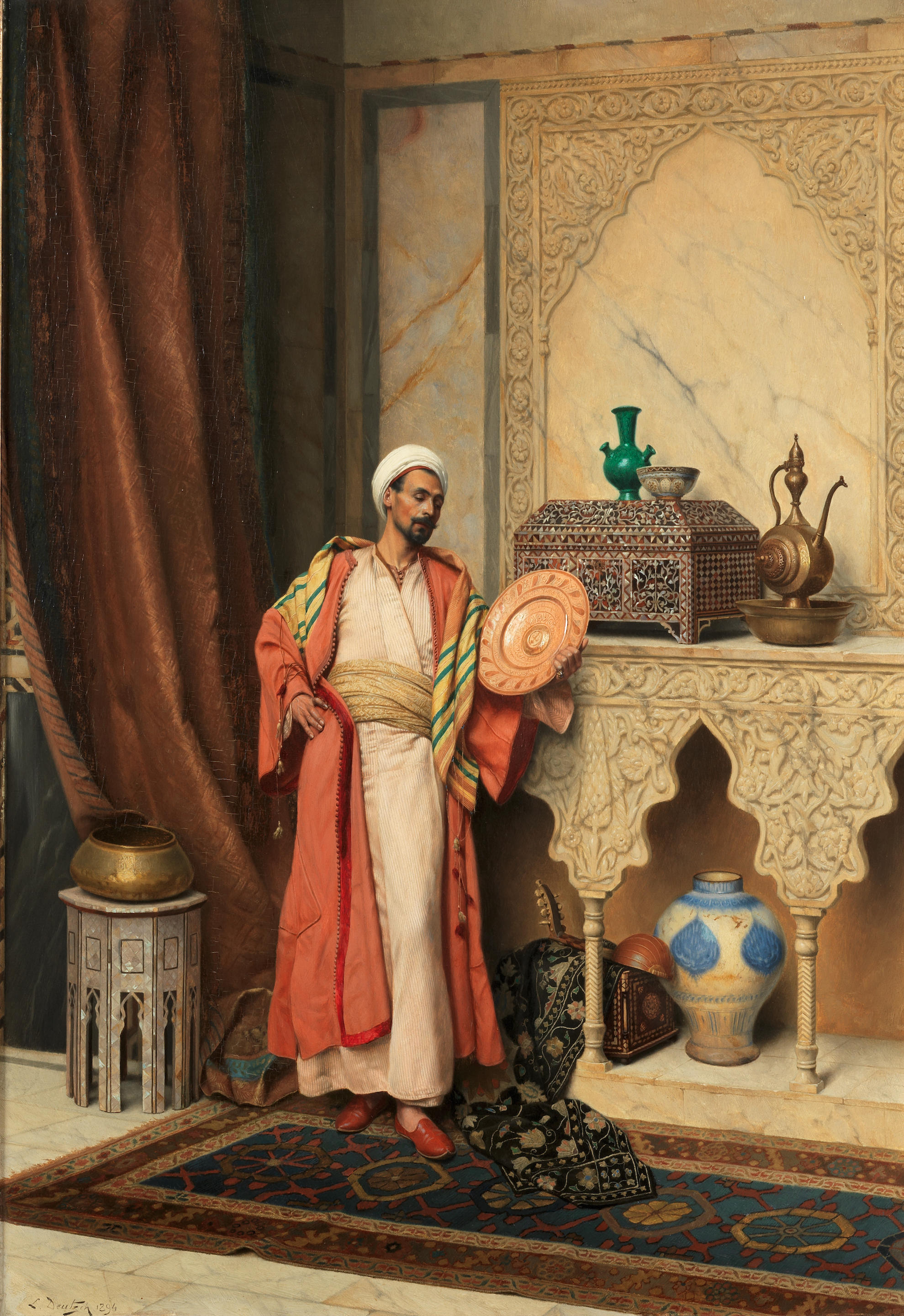
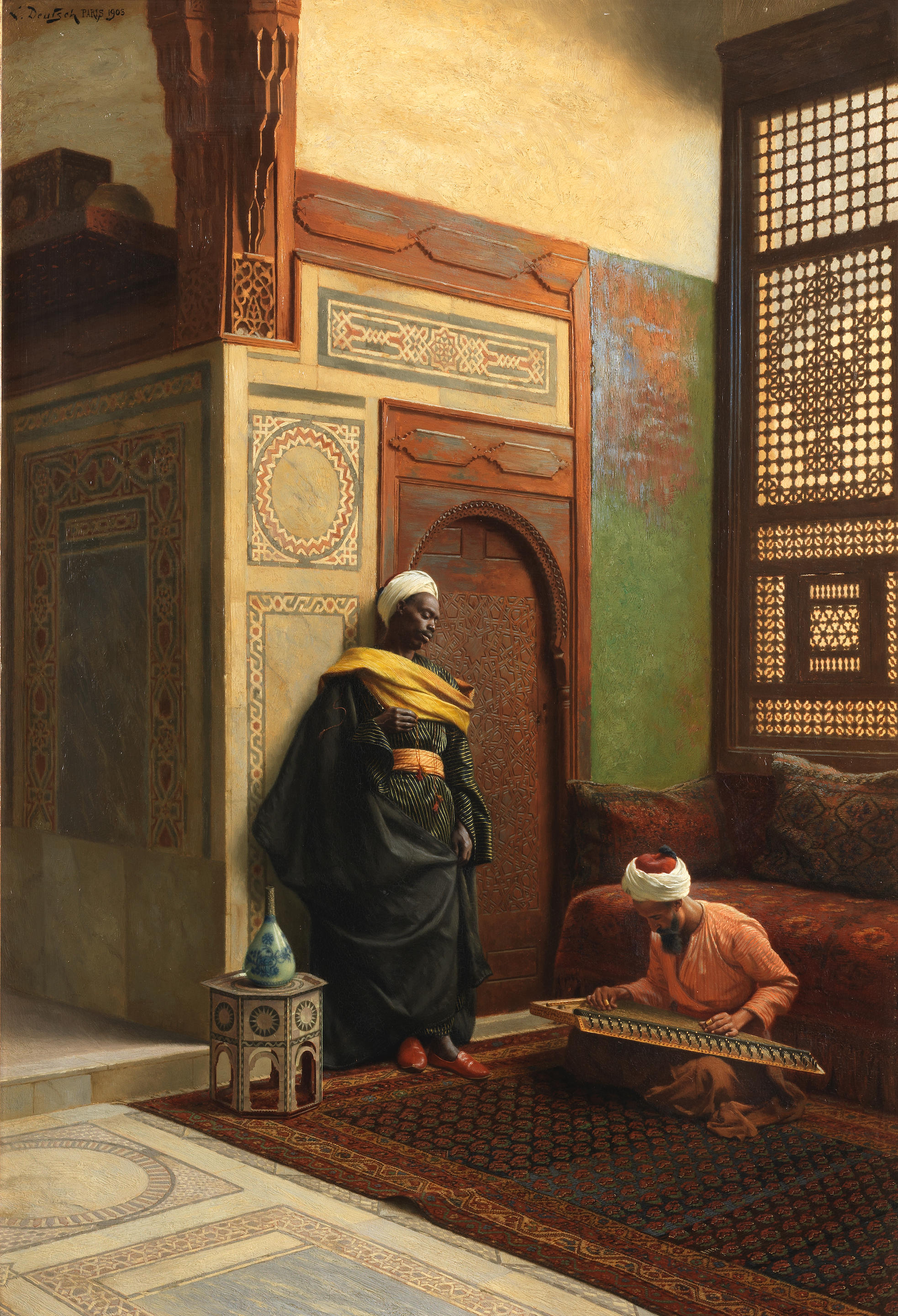



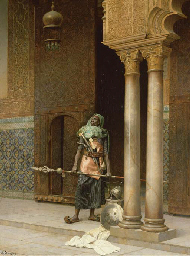
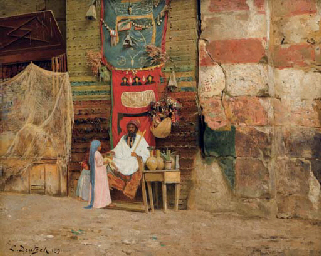
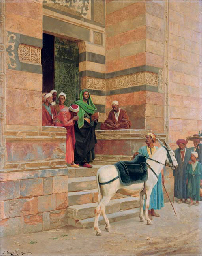
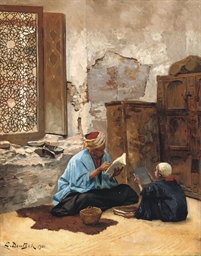
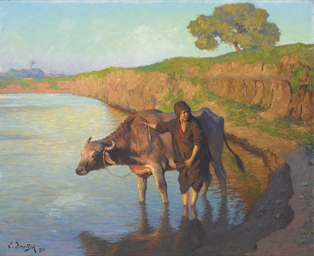



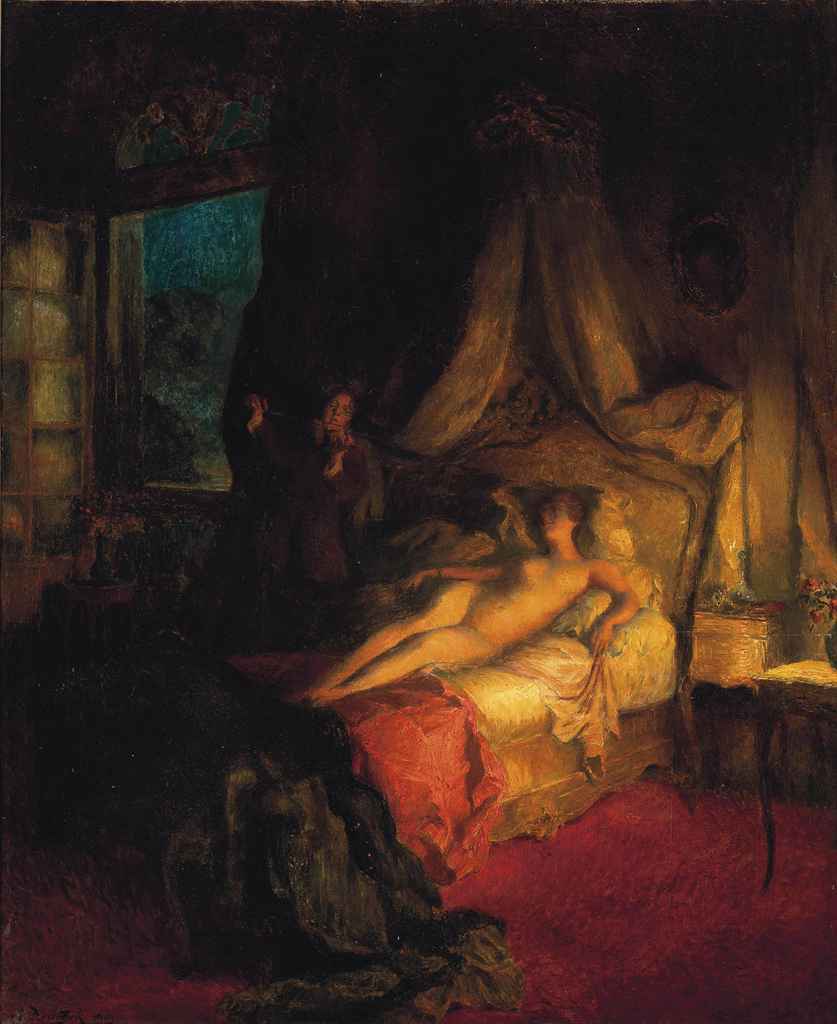
Testen Sie LotSearch und seine Premium-Features 7 Tage - ohne Kosten!
Lassen Sie sich automatisch über neue Objekte in kommenden Auktionen benachrichtigen.
Suchauftrag anlegen